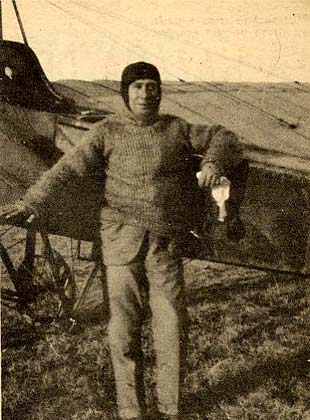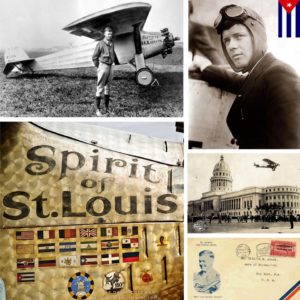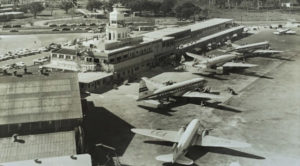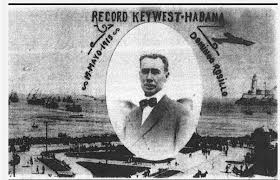 LOS PRIMEROS VUELOS DE LA AVIACION CUBANA.
LOS PRIMEROS VUELOS DE LA AVIACION CUBANA.
El 2 de enero de 1912 vuela por primera vez un cubano en un aeroplano, Agustin Parlá Orduña, en La Habana, acompañado por el piloto Charles F. Walsh. Después de este vuelo Parlá recibe cursos de pilotaje en la Escuela Curtiss de la Florida y se convierte de esta manera en el primer piloto graduado cubano el 20 de abril de 1912.
Parlá y otro piloto cubano, Domingo Rosillo, compiten en un Vuelo de audaces atravesando el estrecho que separa la Habana de Florida, en Mayo de 1913. Agustin Parla, se le considera el primer piloto cubano. Este fue el primer vuelo internacional de la aviación en Latinoamérica, estableciendo Rosillo un récord mundial de distancia el 17 de mayo al volar en su Bleriot XI las 90 millas desde Key West (Cayo Hueso) hasta La Habana en 2 horas y 40 minutos. Este récord le fue arrebatado nada menos que al famoso piloto y diseñador aeronáutico francés Luis Bleriot. Con este vuelo gana un premio de $ 10 000 por ser el primer piloto en cruzar esa ruta. Pocos días después, el 19 de Mayo 1913 Agustín Parlá efectúa el segundo vuelo internacional en la ruta Key West, Florida hacia La Habana, Cuba. El primer vuelo Santiago de Cuba – Habana con escalas, se realiza el 24 de mayo de 1915 por el piloto cubano Jaime González Grocier, con una duración de 7 horas.
El 12 de mayo de 1919 se bautiza el primer avión propiedad del gobierno cubano, con el nombre de “SUNSHINE”. En este avión el 29 de mayo de 1919 Agustín Parlá efectúa el primer vuelo comercial con Estados Unidos. Poco después, el 29 de junio, se toman las primeras fotos aéreas de La Habana, desde el mismo avión “SUNSHINE”.
Aprovechando la bonanza económica del país, se constituye en octubre de 1919 la primera empresa de aviación de Cuba, la Compañía Aérea Cubana (C.A.C), fundada por el millonario, entusiasta de la aviación y hombre de negocios cubano , Anibal J.de Mesa, quien empleó a Agustín Parlá como Gerente General. Desafortunadamente, esta empresa dejó de funcionar un año y tres meses después, debido a la inesperada depresión económica de Cuba. La C.A.C tenía seis aviones Farman, traídos a Cuba en barco. Estableció varios servicios, como los de escuela con Farman F-40, vuelos de observación alrededor de La Habana, investigaciones y fotografía aérea. Volaba con Farman F-60 Goliath de La Habana a Santiago de Cuba, vía Santa Clara, Cienfuegos y Camaguey. En el mismo octubre, pero de 1920 la CAC inaugura la línea Habana-Cienfuegos-Santa Clara con dos vuelos de ida y vuelta semanales. Los precios por esta ruta eran de $50.00 y $70.00 de La Habana a Cienfuegos y Santa Clara respectivamente, y $25.00 entre estas dos ciudades villaclareñas de Cienfuegos y Santa Clara.
Primer accidente mortal de la aviación civil cubana
Se produce el día 4 de Julio de 1920, a bordo del Morane Saulnier usado por Rosillo, al despegar de la finca “La Bien Parecida” en el barrio de Luyano, en la Habana, perdieron la vida sus dos tripulantes después del despegar. Uno de los fallecidos es el Tte. Jaime González Crocier, uno de los pioneros de la aviación cubana. La catástrofe ocurrió en la finca La Fernanda, por el puente Alcoy. Había efectuado los primeros vuelos atravesando Cuba y en 1920 unió las costas occidentales con las orientales en su monoplano Bleriot.
Los primeros vuelos internacionales en América y el primer contrato de correo aéreo exterior de Estados Unidos fueron hacia Cuba
La aparición de la aviación causó un gran impacto en las relaciones entre Florida y Cuba. Con el pasar de los años una corriente de turistas comenzó a viajar a Cuba en busca de vida exótica nocturna y playas tropicales. Los cubanos a su vez viajaban a la Florida a comprar mercancías americanas. La música cubana, bailes como el cha-cha-cha y el mambo y la comida criolla se pusieron de moda en los Estados Unidos.
El 9 de Enero de 1929 llegó a La Habana el avión de Pan American Airways Ford 5-AT bautizado con el nombre de “Cuba”, para inaugurar una ruta aérea entre Estados Unidos, La Habana, Santiago de Cuba, Port-au-Prince, Santo Domingo y Puerto Rico.
CHARLES A. LINDBERGH EN CUBA.
El 8 de febrero de 1928 llega a La Habana, Cuba, en vuelo de buena voluntad, procedente de Haití, el héroe de la aviación, Charles A. Lindbergh, a los controles del famoso “Spirit of St. Louis” y se declara este día como “EL DIA DE LINDBERGH”. Después de su histórico vuelo sobre el Atlántico, Lindbergh visitó muchos países en su avión y como recuerdo de sus visitas, se pintaba la bandera de estos países en el fuselage. La bandera cubana es la última porque después de este viaje, Lindbergh retiró su avión “Spirit of St. Louis” y lo donó al Instituto Smithsonian, donde hoy se encuentra en exhibición en el Museo del Aire y del Espacio, en Washington, D.C. El 12 de febrero de 1928 el Presidente Gerardo Machado vuela con Lindbergh sobre La Habana.
Se amplían las infraestructuras de la isla. En marzo de 1929 por medio de la Orden General No. 223 se autoriza la creación de lo que es hoy el Aeropuerto Internacional “José Martí”, en Rancho Boyeros, La Habana. El aeropuerto es inaugurado el 24 de febrero de 1930 con el nombre de “Gerardo Machado”.
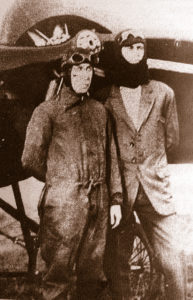 THE FIRST FLIGHTS OF THE CUBAN AVIATION.
THE FIRST FLIGHTS OF THE CUBAN AVIATION.
On January 2, 1912, a Cuban flies for the first time in an airplane, Agustin Parlá Orduña, in Havana, accompanied by the pilot Charles F. Walsh. After this flight, Parlá receives pilot courses at the Curtiss School in Florida and thus becomes the first Cuban graduate pilot on April 20, 1912.
Parlá and another Cuban pilot, Domingo Rosillo, compete in a daring flight crossing the strait that separates Havana from Florida, in May 1913. Agustin Parla, is considered the first Cuban pilot. This was the first international flight of aviation in Latin America, Rosillo establishing a world distance record on May 17 when flying on his Bleriot XI the 90 miles from Key West (Key West) to Havana in 2 hours and 40 minutes. This record was snatched from none other than the famous French aeronautical pilot and designer Luis Bleriot. With this flight, he earns a prize of $ 10,000 for being the first pilot to cross that route. A few days later, on May 19, 1913, Agustín Parlá made the second international flight on the Key West, Florida route to Havana, Cuba. The first flight Santiago de Cuba – Havana with stops, is made on May 24, 1915, by Cuban pilot Jaime González Grocier, with a duration of 7 hours.
On May 12, 1919, the first airplane owned by the Cuban government was baptized, with the name of “SUNSHINE”. In this airplane, the 29 of May of 1919 Agustín Parlá realizes the first commercial flight with the United States. Soon after, on June 29, the first aerial photos of Havana were taken, from the same plane “SUNSHINE”.
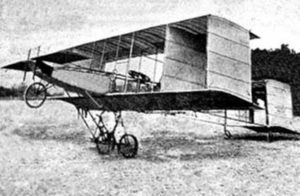
Taking advantage of the economic boom of the country, in October 1919, the first Cuban aviation company, the Cuban Air Company (CAC), founded by the millionaire, aviation enthusiast and Cuban businessman, Anibal J.de Mesa, was constituted. who employed Agustín Parlá as General Manager. Unfortunately, this company stopped working for one year and three months later, due to the unexpected economic depression of Cuba. The C.A.C had six Farman aircraft, brought to Cuba by boat. Established several services, such as a school with Farman F-40, observation flights around Havana, research and aerial photography. He flew with Farman F-60 Goliath from Havana to Santiago de Cuba, via Santa Clara, Cienfuegos, and Camaguey. In the same October, but from 1920 the CAC inaugurates the Havana-Cienfuegos-Santa Clara line with two weekly round trips. The prices for this route were $ 50.00 and $ 70.00 from Havana to Cienfuegos and Santa Clara respectively, and $ 25.00 between these two cities of Villa Clara from Cienfuegos and Santa Clara.
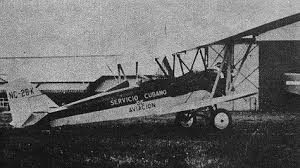
The first fatal accident of Cuban civil aviation
It takes place on July 4, 1920, aboard the Morane Saulnier used by Rosillo, when taking off from the farm “La Bien Parecida” in the neighborhood of Luyano, in Havana, both crewmembers lost their lives after taking off. One of the deceased is Lt. Jaime González Crocier, one of the pioneers of Cuban aviation. The catastrophe occurred at the La Fernanda farm, by the Alcoy bridge. He had made the first flights through Cuba and in 1920 he joined the western coasts with the eastern ones in his Bleriot monoplane.
The first international flights in America and the first foreign airmail contract in the United States went to Cuba
The appearance of aviation caused a great impact on relations between Florida and Cuba. Over the years a stream of tourists began to travel to Cuba in search of exotic nightlife and tropical beaches. The Cubans, in turn, traveled to Florida to buy American goods. Cuban music, dances such as cha-cha-cha and mambo and creole food became fashionable in the United States.
On January 9, 1929, the Pan American Airways Ford 5-AT plane baptized with the name “Cuba” arrived in Havana to inaugurate an air route between the United States, Havana, Santiago de Cuba, Port-au-Prince, Santo Domingo, and Puerto Rico.
On February 8, 1928, the aviation hero, Charles A. Lindbergh, arrives at Havana, Cuba, on a flight of good will, from Haiti, at the controls of the famous “Spirit of St. Louis” and declares this day as “THE DAY OF LINDBERGH”. After his historic flight over the Atlantic, Lindbergh visited many countries on his plane and as a reminder of his visits, the flag of these countries was painted on the fuselage. The Cuban flag is the last because, after this trip, Lindbergh withdrew his “Spirit of St. Louis” plane and donated it to the Smithsonian Institute, where today it is on display at the Air and Space Museum, in Washington, D.C. On February 12, 1928 President Gerardo Machado flies with Lindbergh over Havana.
The infrastructures of the island are extended. In March 1929, through General Order No. 223, the creation of what is today the “José Martí” International Airport in Rancho Boyeros, Havana, was authorized. The airport was inaugurated on February 24, 1930 with the name “Gerardo Machado”.
Agencies/ Wiki/ Cuban Aviation/ Ruben Urribarres/ Extractos/ Excerpts/ Internet Photos/ Arnoldo Varona/ www.TheCubanHistory.com
THE CUBAN HISTORY, HOLLYWOOD.



 < THE FIRST Flights of the Cuban Aviation. PHOTOS.
< THE FIRST Flights of the Cuban Aviation. PHOTOS.